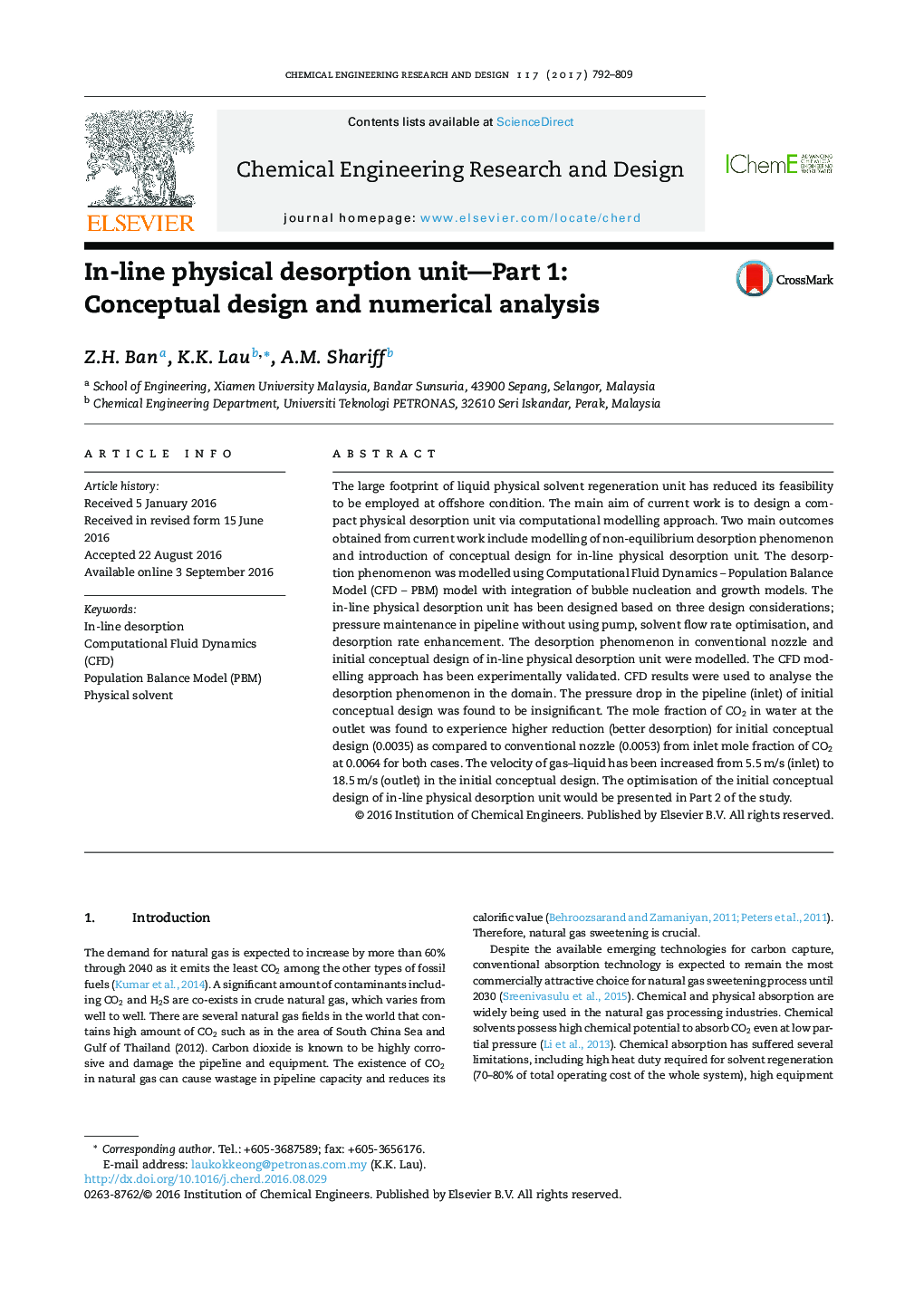| Article ID | Journal | Published Year | Pages | File Type |
|---|---|---|---|---|
| 4987370 | Chemical Engineering Research and Design | 2017 | 18 Pages |
â¢In-line physical desorption unit was developed in order to reduce the footprint.â¢Non-equilibrium desorption phenomenon with bubble and CFD - PBM models was modelled.â¢Initial conceptual design could be operated without pumps.â¢Desorption in initial conceptual design was enhanced.â¢The velocity head of the gas-liquid in initial conceptual design was conserved.
The large footprint of liquid physical solvent regeneration unit has reduced its feasibility to be employed at offshore condition. The main aim of current work is to design a compact physical desorption unit via computational modelling approach. Two main outcomes obtained from current work include modelling of non-equilibrium desorption phenomenon and introduction of conceptual design for in-line physical desorption unit. The desorption phenomenon was modelled using Computational Fluid Dynamics - Population Balance Model (CFD - PBM) model with integration of bubble nucleation and growth models. The in-line physical desorption unit has been designed based on three design considerations; pressure maintenance in pipeline without using pump, solvent flow rate optimisation, and desorption rate enhancement. The desorption phenomenon in conventional nozzle and initial conceptual design of in-line physical desorption unit were modelled. The CFD modelling approach has been experimentally validated. CFD results were used to analyse the desorption phenomenon in the domain. The pressure drop in the pipeline (inlet) of initial conceptual design was found to be insignificant. The mole fraction of CO2 in water at the outlet was found to experience higher reduction (better desorption) for initial conceptual design (0.0035) as compared to conventional nozzle (0.0053) from inlet mole fraction of CO2 at 0.0064 for both cases. The velocity of gas-liquid has been increased from 5.5Â m/s (inlet) to 18.5Â m/s (outlet) in the initial conceptual design. The optimisation of the initial conceptual design of in-line physical desorption unit would be presented in Part 2 of the study.
Graphical abstractDownload high-res image (53KB)Download full-size image
